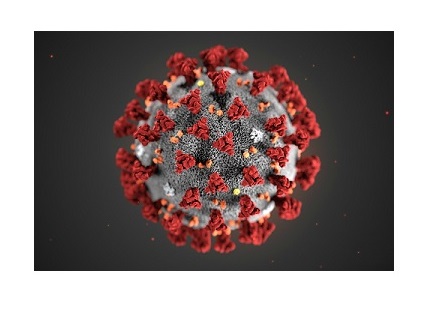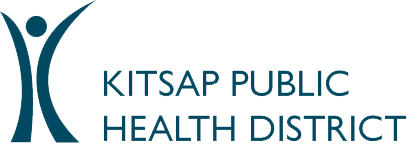
Actions Requested:
- Be aware of vaccine booster approvals and recommendations:
- On October 22, the Centers for Disease Control and Prevention (CDC) recommended a single booster dose of Moderna SARS-CoV-2 vaccine to certain high risk populations at least 6 months after their primary series under the Food and Drug Administration’s (FDA) expanded emergency use authorization (EUA).
-
- All people 65 years or older or people who live in long-term care facilities should receive a booster dose.
- People between 50 and 64 years old with underlying medical conditions should receive a booster dose.
- People between 18 and 49 years old with underlying medical conditions may receive a booster dose based on their individual risks and benefits.
- People between 18 and 64 years old in an occupational or institutional setting where the burden of disease and risk of infection are high may receive a booster dose based on their individual risks and benefits.
- All people 65 years or older or people who live in long-term care facilities should receive a booster dose.
-
- CDC recommended a booster shot for all recipients of the Johnson & Johnson/Janssen vaccine who are 18 and older at least 2 months after initial administration.
- On October 20, the FDA extended the Emergency Use Authorization (EUA) to allow for a heterologous (or “mix and match”) booster doses in eligible individuals following completion of primary vaccination with a different available COVID-19 vaccine.
- On October 22, the Centers for Disease Control and Prevention (CDC) recommended a single booster dose of Moderna SARS-CoV-2 vaccine to certain high risk populations at least 6 months after their primary series under the Food and Drug Administration’s (FDA) expanded emergency use authorization (EUA).
- Review a newly released MMWR showing no increased risk for non-COVID, all-cause mortality among COVID-19 vaccine recipients reinforcing the safety profile of currently approved COVID-19 vaccines.
- Be aware of a new large study in JAMA showing that vaccines do not increase the risk of spontaneous abortion in pregnant women.
- Continue to promote COVID-19 vaccine among people who are pregnant, lactating or who are trying to become pregnant now or might become pregnant. Educate these patients on the safety and effectiveness of COVID-19 vaccine during pregnancy and emphasize that the benefits of vaccination outweigh known or potential risks.
- Help patients access their vaccine records and explain the different ways to show vaccination status. There are options for everyone, including those who need language assistance or don’t have access to a computer or smartphone.
- Be aware, there is a national shortage of the BinaxNOW COVID-19 rapid antigen tests. Use other antigen or PCR tests while supplies are limited. If you need test kits, DOH has alternative options, contact the Statewide Testing Branch 360-236-4350 or doh-cbts.imt@doh.wa.gov.
- Be aware, Abbott Laboratories extended all BinaxNOW tests’ shelf life to 12 months. See Abbott’s BinaxNOW COVID-19 ag card product expiry update for new expiration dates by lot number.
- Encourage patients to report over-the-counter COVID-19 positive test results to public health by calling Washington State Department of Health COVID hotline (1-800-525-0127) and to follow CDC recommendations for isolation or quarantine.
Background
Kitsap resident COVID-19 cases remain elevated but continue to decrease steadily. A total of 409 cases were reported in the week ending 10/16 across Kitsap County, which is half of what we were seeing 5 weeks ago. Weekly case rates remain high (>100 cases per week/100K population) in all regions except Bainbridge Island. The case rate among not fully vaccinated was 8.5 times higher than among those fully vaccinated. There are currently 46 active outbreaks being monitored by KPHD.
Hospitalizations are lower than at their peak (over 50 per week from late Aug – mid-Sept) but remain high. There were 27 new hospitalizations among COVID cases reported in the week ending 10/23. Hospitalizations among people aged 12-59 not fully vaccinated were 15 times higher than among those unvaccinated. A total of 227 COVID-related deaths have been reported in Kitsap County residents. 77 of these have occurred in September and October of 2021.
School-aged children and youth: The gap in case incidence between school-aged children (age 5-18) and the general population appears to be shrinking. There are currently 14 active outbreaks in school/childcare/youth activity settings being monitored by KPHD.
Vaccines:
- 75.1% of Kitsap County residents 12 + have initiated vaccination (WA IIS and DoD as of 10/23 and 10/25 respectively). 69.5% of residents 12+ are fully vaccinated.
- Groups with the lowest vaccine initiation rates (WA IIS data only, does not include DoD):
- Age: 19 – 34, 60% with +2% increase in the past 2 weeks
- Geographic Region: Bremerton and Central Kitsap, 62% with +1% increase in past 2 weeks
- Race/Ethnicity: Black/African American 45% with +1% in past 2 weeks; Hispanic/Latinx 52%, +1% in past 2 weeks
COVID-19 vaccine booster dose updates
Following a vote by the Advisory Committee on Immunization Practices (ACIP) on October 21, CDC recommended a single booster dose of Moderna’s mRNA vaccine to certain high-risk populations at least 6 months after their primary series under the FDA’s expanded EUA:
- All people 65 years or older or who live in long-term care facilities should receive a booster dose.
- People between 50 and 64 years old with underlying medical conditions should receive a booster dose.
- People between 18 and 49 years old with underlying medical conditions may receive a booster dose based on their individual risks and benefits.
- People between 18 and 64 years old in an occupational or institutional setting where the burden of disease and risk of infection are high may receive a booster dose based on their individual risks and benefits.
The booster dose of Moderna will be half of the primary series dose (50 mcg in 0.25 mL). The multiuse vials will be unchanged, so there will be 20 booster doses in each vial of Moderna vaccine. Note that the third dose of Moderna vaccine recommended for immunocompromised individuals will still be the full 0.5 mL dose, two months following initial vaccination. There is no guidance yet about whether this group who receives a series of three prime doses will require a booster six months after the primary series is complete.
The CDC also approved a single booster dose of Johnson and Johnson’s viral vector vaccine at least two months after receiving the first dose to all individuals under the FDA’s expanded EUA. This will be the same 0.5 mL dose as the prime dose.
For the first time, the FDA has approved heterologous vaccine administration. For instance, people who received a single dose Johnson and Johnson vaccine for their primary series, can choose any of the three available vaccines for their booster dose. This is based on the results of a preprint study showing robust immune response and comparable safety to using mixed vaccine types
We encourage you to reach out to your eligible patients and discuss whether a booster dose would benefit them. It is important to remind younger populations and people without compromised immune systems that the original vaccine series still offers excellent protection against severe COVID-19 infections, hospitalization and death. In Washington, 94% of COVID-19 deaths (and over 99% of deaths in people under age 65) from February through June of 2021 were in people who were not fully vaccinated.
COVID-19 vaccine resources
- FDA booster dose updates.
- EUA fact sheets for recipients and caregivers:
- COVID-19 vaccine locator, DOH.
- COVID-19 vaccine for providers
- COVID-19 vaccine provider toolkit and resources, DOH.
- COVID-19 vaccination for providers, CDC.
- Clinical considerations for COVID-19 vaccination and guidance for managing anaphylaxis, CDC.
- COVID-19 vaccine quick reference guide for healthcare professionals, CDC.
- COVID-19 vaccine training module on best practices for providers, CDC.
- Association of J&J with thrombotic thrombocytopenia after vaccination:
- J&J vaccine health alert, CDC.
- Vaccine-induced immune thrombotic thrombocytopenia frequently asked questions, American Society of Hematology (ASH).
- Diagnosis and management of vaccine-induced immune thrombotic thrombocytopenia webinar, ASH and CDC.
- April 15, 2021 COCA call: J&J COVID-19 vaccine and cerebral venous sinus thrombosis with thrombocytopenia update for clinicians on early detection and treatment, CDC.
- Association of mRNA vaccines with myocarditis and pericarditis after vaccination:
- Information for healthcare providers: myocarditis and mRNA vaccines, DOH
- Follow-up of patients with myocarditis, consult recommendations, American Heart Association and the American College of Cardiology.
- Clinical considerations: Myocarditis and pericarditis after receipt of mRNA COVID-19 vaccines among adolescents and young adults, CDC.
- Overview of myocarditis and pericarditis, ACIP COVID-19 Vaccines Work Group, June 23, 2021, CDC.
- COVID-19 subcommittee of the World Health Organization (WHO) Global Advisory Committee on Vaccine Safety (GACVS) reviews cases of mild myocarditis reported with COVID-19 mRNA vaccines, WHO news release, May 26, 2021.
- Myocarditis and pericarditis following mRNA COVID-19 vaccination, CDC.
- Selected adverse events reported after COVID-19 vaccination, CDC.
- Myocarditis and pericarditis resources for the public, CDC.
Testing to return to school
Families need help navigating the K-12 testing requirements to return to school when a student has COVID-like illness (CLI). Children presenting with CLI should receive a PCR test before returning to school. Over-the-counter antigen tests are not acceptable proof of testing.
- If a person with CLI tests negative for SARS-CoV-2 with a molecular test, they may return to school if they are not a close contact of someone with COVID-19 and subject to quarantine.
- If a person with CLI tests negative for SARS-CoV-2 with an antigen test, per CDC antigen testing guidance, a confirmatory lab-based molecular test is recommended.
- An alternative to confirmatory nucleic acid amplification testing (NAAT) is serial antigen testing performed every 3-7 days for 14 days.
Additional resources
